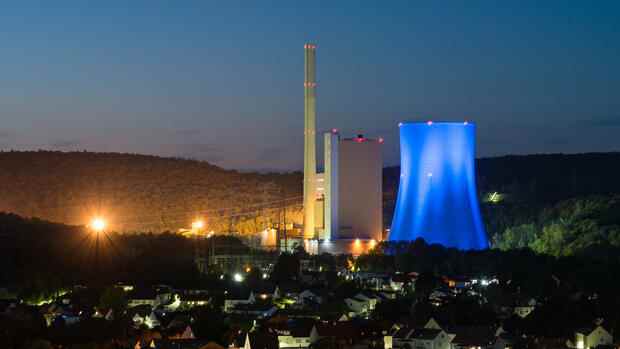The power plant with an output of 726 megawatts in Saarland is Steag’s largest in Germany
(Photo: dpa)
Frankfurt The owners of the electricity producer Steag have decided to split up into a “green” and a “black” area, as the Handelsblatt learned from company circles. According to the information, the shareholders’ meeting made the corresponding decision on Monday, which is intended to facilitate the upcoming sale.
Although many investors are interested in Steag’s activities in renewable energies, the “green” area, they are not interested in the traditional core business, “black” coal-fired power generation. The resolution is said to have preceded intensive discussions with employee representatives. The Steag owners declined to comment. “We welcome that the necessary committee resolutions have been passed and that the Sunrise project can be continued as planned,” said a company spokesman. The “Project Sunrise” stands for the division and sale of Steag.
With the split, an important course has been set for the beginning sales process. The municipal owners of the company – the cities of Dortmund, Essen, Bochum, Duisburg, Oberhausen and Dinslaken – are expecting the first bids at the end of March or the beginning of April. According to financial circles, Steag could be valued at two to three billion euros.
Steag coal-fired power plants are highly profitable
The cities have agreed to bring Steag onto the market as a whole, but to legally separate the two areas so that buyers can continue to run them as individual companies. This is important not least because many investors have strict sustainability guidelines that make investments in fossil fuels more difficult. In addition, although bank financing for wind power and solar systems can be easily obtained, this is not the case for coal-fired power plants, which are currently profitable but unattractive in the long term.
Top jobs of the day
Find the best jobs now and
be notified by email.
The Steag owners hope that the company will continue to benefit from the electricity prices that have skyrocketed as a result of the Ukraine war and that the coal activities will thus finance itself. In the current environment, they are highly profitable. For the current year, Steag expects earnings before interest and taxes of EUR 963 million, which is around EUR 800 million above the original budget.
The company has brought shut-down power plants back online on a large scale or allowed those that were about to be shut down to continue running. The plants in Bexbach, Weiher, Bergkamen and Völklingen that are returning to the market or continue to be operated have a combined output of 2.5 megawatts.
“Arithmetically, our power plants can replace around a third of the electricity generated in gas-fired power plants in 2021,” said Ralf Schiele, Steag Managing Director Market and Technology, recently. That corresponds to not quite four percent of the total amount of electricity generated in Germany last year. A continued operation of the coal activities beyond the year 2031, when they should actually end, is considered possible, as company insiders say.
The situation today is completely different than a year ago. At the end of 2021, Steag, which had been making losses for a long time, agreed on a restructuring with its creditor banks. Part of the agreement is the sale of the company by the end of next year. However, the owners have fallen out over the right course, with 36 percent owner Dortmund standing against the other five municipalities.
New candidate for the chairmanship of the supervisory board
The quarrel recently called for a personal sacrifice: the Steag supervisory board chairman Gerhard Jochum, who was supported by Dortmund, resigned. The candidate for the successor at the head of the body is Dietmar Spohn from Stadtwerke Bochum. An election is planned for mid-November.
The contract of the criticized restructuring director Ralf Schmitz, who was appointed by the banks, is now likely to be extended, according to company circles. It expires in January.
According to financial circles, the dispute over management personnel and the structure of the sale had caused uncertainty among potential bidders. Steag has already held initial exploratory talks with the Czech investor EPH, which bought Vattenfall’s lignite business in eastern Germany in 2016, and with the Czech supplier CEZ, which continues to rely heavily on coal.
Around two dozen infrastructure investors, such as Macquarie, Brookfield and IFM, were also approached. For some of them, coal commitments are on the index from an ecological point of view. But they could buy everything, keep the “green” part and either continue to operate the “black” part for a few years or sell it, that’s the hope of some Steag owners.
More: Owners of “war profiteer” Steag argue about sale


